Pumpkins are the best addition to any home garden. Pumpkins are not only a fun fall decoration, but they can also do as several delicious treats. Pumpkin growing is not difficult and is even a popular garden activity. Once you know how to grow your Pumpkins, it’s very easy to grow year after year, and the results can be extraordinary, changing your garden into an autumn wonderland.
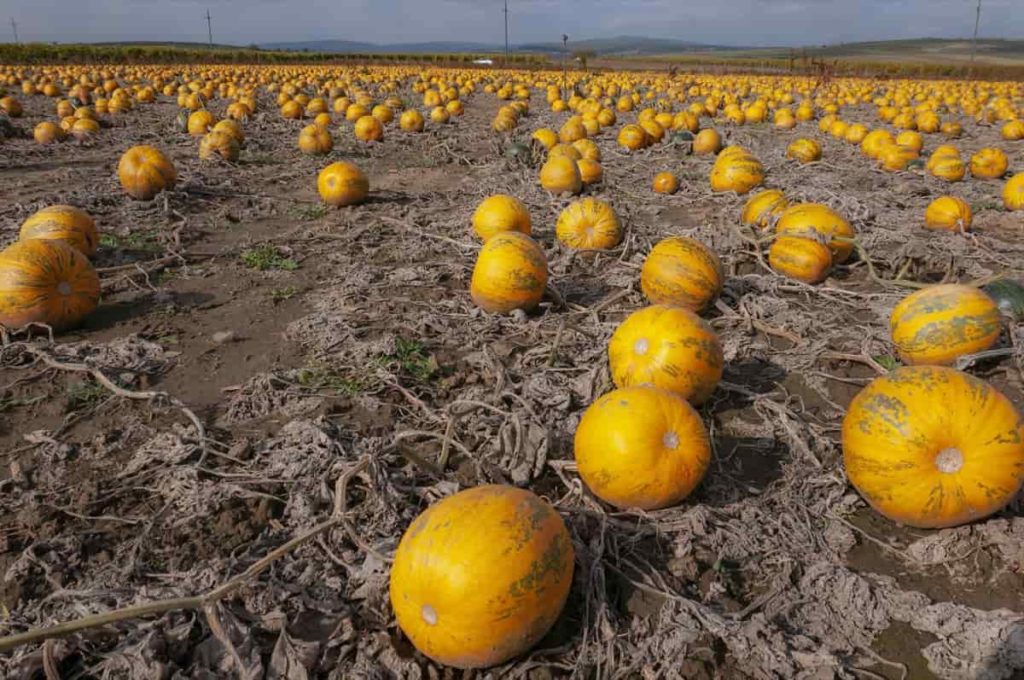
Growing Pumpkins from seed to harvest
How long does a Pumpkin take from seed to harvest?
- Growing Pumpkins isn’t difficult, even in raised beds or containers.
- Pumpkins need space to grow fast. Planting Pumpkin seeds is fun in the garden. Put a small seed in the soil, and you will be rewarded with an armful of autumn fruits in a few months.
- Different types take different amounts of time to ripen. Fast-maturing Pumpkins are completely colored in 90 to 100 days, while some take up to 125 days to mature.
- Usually, Pumpkins take 90 to 120 days to mature after planting seeds, depending on the type. Pumpkins are ripe when fully colored and have a hard rind and a wooden stem.
- Once the pollination is successfully performed, it takes about 45 to 55 days for the Pumpkin to mature. After that, the Pumpkin grows larger, and its color changes according to the plant type.
How many Pumpkins do you get off of one seed?
- Pumpkins are easy to grow and fun; place them in a sunny position, with plenty of water and shelter from the cold winds.
- One Pumpkin plant can produce between two and five Pumpkins. Smaller varieties will produce a dozen or more. There will usually be several other female fruits, but some will not develop for several reasons.
How many Pumpkin seeds do you plant in one spot?
- You can plant two to four Pumpkin seeds in the soil at a depth of 1 inch. Give enough water to the Pumpkin seeds so the soil is moist but not swamped. Add a thin layer of compost over the soil.
- Sow Pumpkin seeds at a distance of 6 to 12 inches in rows. Once the seedlings grow 2 to 3 inches long, each 18 to 36 inches thin to one plant. Keep the seeds moist until they germinate.
What to put under Pumpkins while growing?
- You should place cardboard or newspaper under your Pumpkin to protect the growing fruit from the soil. Soil can cause Pumpkins to rot over time.
- One option to protect Pumpkins is to hang them from tomato cages or trellis them to keep them off the ground. It can also help preserve your Pumpkin. You can put your Pumpkin in tied-up pantyhose and hand over the plant to them to take it off the ground.
In case you missed it: Growing Pumpkins from Seed at Home – A Full Guide

What month do you plant Pumpkin seeds?
- Sow traditional field Pumpkins in garden soil from May 15 to June 15. You can start seeding indoors two weeks before these dates for an earlier crop or a slightly larger Pumpkin. Miniature Pumpkins don’t need a growing season to reach their full potential.
- Late May to early July is the best time to plant Pumpkin seeds, so you can enjoy them in the fall. You can choose store-bought seeds ready to be planted or collect seeds from a Pumpkin you’ve just harvested; this is a very simple task.
Why does my Pumpkin plant only have one Pumpkin?
- The weather may be why Pumpkin plants have flowers but no fruits. Not only heat but drought stress often causes Pumpkins to produce more male flowers and delays in female flowers. The flooded soil will also damage the root system leading to wilting and miscarriage of flowers or fruits.
- The main reason why your healthy vines don’t produce fruit is that female flowers aren’t being pollinated. Too much nitrogen in the soil can also prevent flower production, leaving vine with all male flowers that cannot pollinate each other. Symptoms of nitrogen toxicity in Pumpkin plants include yellowing of the leaves and burnt edges, which cause them to crisp and turn brown.
Do Pumpkins need a lot of water?
- Pumpkins need a lot of water. To make watering easier, dip a 15 centimeters pot with each plant. Water in it ensures that the water goes down to the roots and does not sit in the neck of the plant, which can lead to rot.
- Pumpkin plants need 1 inch of water per week. You should water deeply in the morning and on very hot afternoons, especially during the fruit sets. Avoid watering leaves and fruits until it’s a sunny day.
- While you can water the Pumpkin daily, it is better to water it only a few times a week. Not only is it less than the time commitment, but it also helps your plants. Since Pumpkins require about an inch of water, create a system that works for your scheduling needs.
- Pumpkins like their soil to be equally moist, so don’t give them too much or too little at a time. Providing more water will make the Pumpkin wilt due to root rot and underwater.
- Pumpkins don’t need water every day. The plants need 1 to 2 inches of water per week. Water your plants every 2 to 3 days when the soil starts drying. Once the upper inch of soil is dry, your Pumpkin needs water.
- Irrigate the Pumpkin plants when the soil is dry. It is special for Pumpkin leaves to wilt on high noons, but if the plants wilt early in the morning, that is a sign it needs water.
- The Pumpkin starts overwatering, affecting the leaves, making them yellow, and then falling off. If you have applied more water to your plants, it can happen within a few days to a week. Just as underwater Pumpkins cause leaf damage, more water will also cause leaf damage, except that it will happen more slowly.
What’s the best fertilizer for Pumpkins?
- You can apply nitrogen-rich fertilizer weekly early in the growing season to produce a healthy plant. Once the flowers begin to form, switch to heavy phosphorus fertilizer for abundant flowers. When real Pumpkins appear, use potassium-rich fertilizer for healthy fruits.
- Feed the Pumpkin plant every 10 to 14 days with a high potassium liquid fertilizer once the fruits start to swell. Support fruits on tiles or pieces of glass to keep them away from damp soil.
- Many farmers use well-decomposed horse manure. Pumpkins require warmth around their leaves and roots. Horse manure has an open texture which means it warms the soil more quickly than cow or pig manure.
- As always, be sure to watch more fertilization with potassium. If you see cracks in the fruit because it is growing, and if it seems to be growing too fast, stop potassium applications in the future. Due to the abundance of this essential nutrient, Pumpkins can grow very fast and open prematurely.
Are coffee grounds good for Pumpkins?
- Pumpkin likes coffee grounds as nitrogen fertilizer, so keep adding it directly to the root zone in strength or liquid or through the finished compost.
- While the coffee ground may not be the best fertilizer for Pumpkins, they can still be used as supplementary fertilizers. Coffee grounds should help increase yields and promote plant growth when properly applied. In addition, the oils in coffee beans promote a healthy root system and improve the structure of the soil. When adding ground coffee to the Pumpkin patch, dilute it thoroughly with water before applying. It will help avoid any potential harm caused by excessive exposure to caffeine or other chemicals.
In case you missed it: Soil Preparation for Pumpkin Plants: Best Soil Mix, pH, and Compost
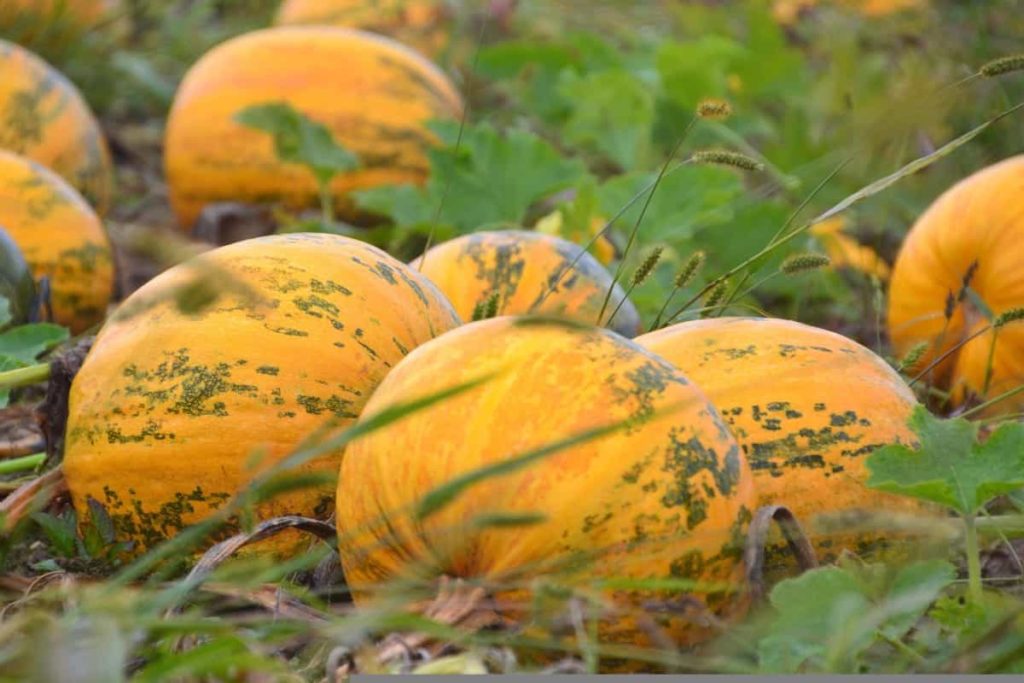
What can you not plant near a Pumpkin plant?
- Pumpkin plants don’t usually make good companions for Potatoes or anything like Cauliflower, Kohlrabi, Brussels Sprouts, or Kale in the Brassica (cabbage) family.
- You can avoid crops with big roots like Potatoes, Beets, and Onions. This is because roots can disturb the shallow roots of Pumpkin that come at harvest time and compete for soil nutrients during the growing season.
- If you have to plant them in a single garden, make sure there is enough space between the plants, and consider choosing cultivars that are small at maturity. Also, try not to crowd a group of plants together. This can lead to additional tangly and confusion in your patch if you’re not careful.
Will Pumpkins grow again next year?
- Pumpkin is a tender annual plant, and it is sensitive to frosts. Thus, Pumpkins must be replanted yearly to produce a reliable crop.
- Plant Pumpkin at a different place yearly. Ideally, keep the Pumpkins on a three-year rotation cycle, which means you don’t place them in one place for three consecutive years.
Can you cut off Pumpkin leaves?
- Pruning Pumpkin vines, as long as it is done judiciously, do not harm plants, like hacking the vines while mowing the lawn. While it is not necessary to prune the vines, doing so can encourage a more abundant harvest and large Pumpkins.
- As the fruits ripen, the old leaves of the plant at the base of the crown slowly die back. Although unsightly, it is a natural, harmless process. Cut the dying leaves to help prevent rot spread and improve air circulation around the plant.
How do you tell if Pumpkin is pollinated?
- The male flowers will be on long, thin stalks. Female flowers will grow on small stalks with a very small bulb at the base; All you need to do is remove the female flowers to prevent excess Pumpkins. Male flowers can result from sudden temperature fluctuations such as cool days/nights followed by hot spells or sudden hot days during mild weather.
- You can also visually inspect female flowers for pollen clinging to their stigma and check Pumpkin buds for growth once the flowers have dried. Encouraging healthy populations of pollinators helps a lot in your production.
- Once the pollination is successfully performed, it takes about 45 to 55 days for the Pumpkin to mature. The Pumpkin begins to grow larger, and its color changes according to the type you apply.
What happens if you grow Pumpkins too close together?
- Vines compete for nutrients and water when Pumpkins are planted too close together. As a result, flowers and young fruits can fall, and the rest of the Pumpkins will not grow to their full size.
- The rows must be 6 to 8 feet apart, when they have their first true leaves, the seedlings become thinner than the best plant every 2 feet. Shrub types are one inch deep and thin for one plant every 3 feet. Allow 4 to 6 feet between rows.
- Space small fruit plants at a distance of 18 to 24 inches, medium 24 to 36 inches, and large varieties at a distance of 36 to 72 inches.
Should I pinch off Pumpkin flowers?
- Pinch any female flowers that appear before the length of the vines reach 10 feet. A large, strong vine is needed to produce a large Pumpkin. If you don’t pinch the female flowers that appear early, the plant will put valuable energy into fruit growth rather than vine growth.
- To make it easier, remove them all. To save effort, observe them. The male flowers will be on long, thin stalks. Female flowers will grow on small stalks with a very small bulb at the base; All you need to do is remove the female flowers to prevent excess Pumpkins. There is no need to panic if the first few flowers are all male. It will soon start developing female flowers.
In case you missed it: Best Fertilizer for Pumpkin: Homemade, Organic, Liquid, Compost Manure, NPK, and Schedule
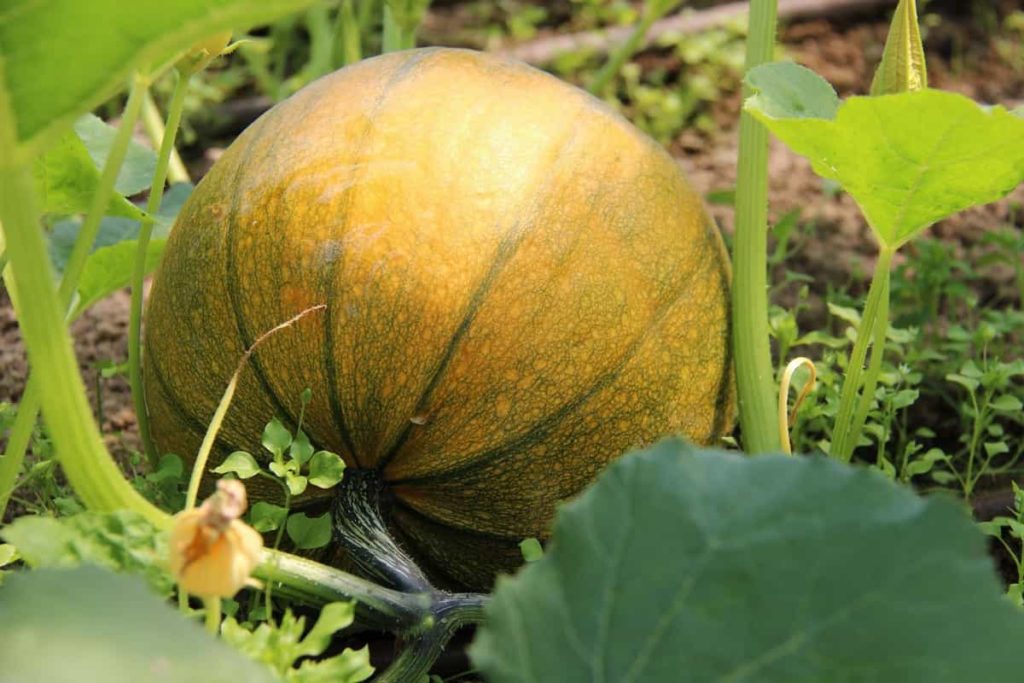
Why are baby Pumpkins rotting on the vine?
- The abundance of fruits can equal a rich Pumpkin crop, but the Pumpkins often rot before they are ready to be picked. Rot is mainly caused by excess soil moisture, breeding grounds for fungal diseases.
- The main reasons for Pumpkin rot on the vine immediately after the blooming phase are insufficient water for lack of pollination. Choose to water a little more to help them pick up nutrients from your soil when your Pumpkins bloom. A bleach bath before and after carving effectively prevents the Pumpkin from rotting.
Why do my Pumpkins keep falling off?
- Poor pollination is probably the most common cause of a Pumpkin falling from a vine, as the window of time for pollination is too narrow, about four to six hours. If there is no pollination during this time, the flowers will be closed for good, they will never be pollinated.
- Another common reason for Pumpkin plants to fall fruit is high stress. This may be due to higher temperatures and higher humidity. The plant can also abort the pollinated fruit if it does not have enough nutrients to keep growing.
Is Epsom salt good for Pumpkins?
- Adding Epsom salt to the Pumpkin plant will help if the soil is depleted of magnesium, and since it has a very low risk of overuse like most commercial fertilizers, you can safely use it on almost all plants in your garden.
- Treatments may include water-soluble magnesium sulfate, commonly sold as Epsom salt, or magnesium oxide distributed through drip irrigation. Epsom salt provides both magnesium and sulfur, and one tablespoon of Epsom salt per gallon of water can be sprinkled on Pumpkin leaves. Fertilizers containing potassium, calcium, or ammonium should be used sparingly because these cations compete with magnesium in the soil.
Does sugar water help Pumpkins grow?
- Sugaring your Pumpkins, for example, can make them bigger than just sun and water. Select a place in your yard or garden for at least six hours a day with full sun, pH balance, and well-draining soil.
- Soak the Pumpkin seeds in lukewarm pure or sugar water for two to three hours before planting seeds. Sugar water promotes the nutrition of seeds, while pure water is always helpful in gardening.
- Make small silt by using a knife at the base of the Pumpkin stem, about 4 inches above the Pumpkin. Place one end of your cotton string into the silt, and place the other end in your sugar water mixture. The Pumpkin will slowly suck the sugar mixture, which will help it grow bigger.
Are eggshells good for Pumpkins?
- An easy way to grow seeds is to use empty eggshells instead of pots. When the plant grows large enough, it is ready to go into the ground. Just tear the shell and apply it to the soil. The egg will be a very good fertilizer for growing a young plant.
- You can grow Pumpkin seeds using egg shells. This would be a good way to start any seedlings. Just crush the shells and put the whole thing in the ground to grow. Shells provide nutrients.
In case you missed it: Pumpkin Gardening For Beginners, How To Start, FAQs
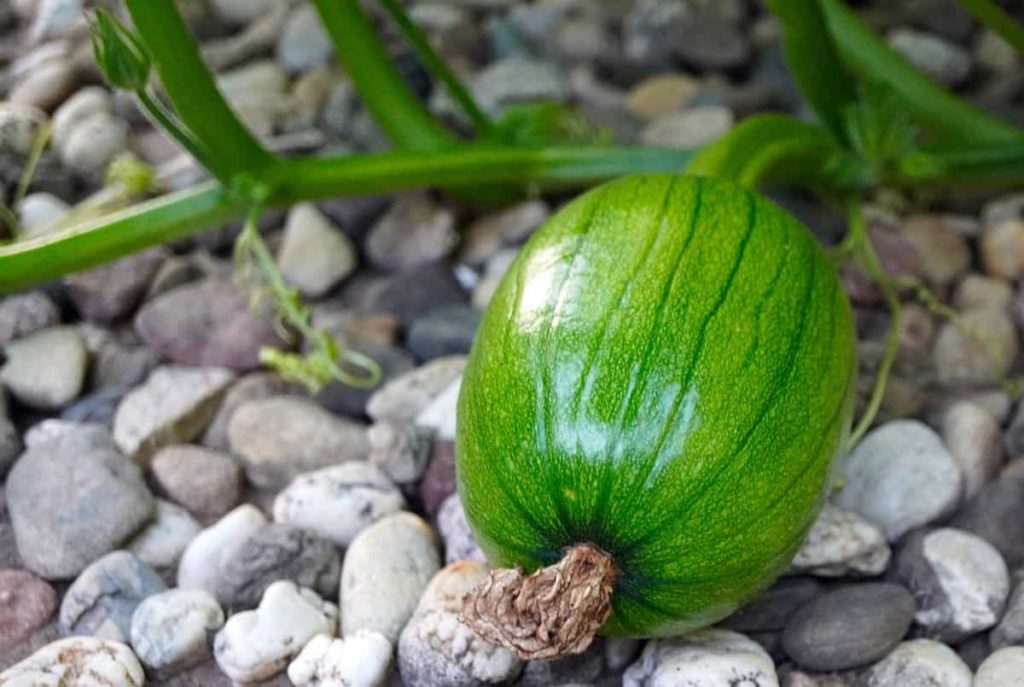
Why are my Pumpkin leaves turning yellow?
- The most common cause of yellow Pumpkin leaves has nothing to do with any disease that can spread from plant to plant. Generally, the cause of yellow Pumpkin leaves is related to dehydration, very hot weather, lack of nutrients, or other stress.
- If the leaves turn yellow color or grow Pumpkins in sandy soil that quickly leach nitrogen, so, you can side dressing of 33-0-0 ammonium nitrate about a week after blooming at the rate of 1 tablespoon per mound. Repeat three weeks later with another application but do not fertilize with nitrogen.
What is the best mulch for Pumpkins?
- Use black plastic mulch, which can be installed a couple of weeks before planting or even just a few days before planting. Organic mulch can also work.
- Wood chips are the main organic material used for Pumpkin plant mulch. This type of mulch comes in a wide variety of colors and types. This is another type of mulch that provides great nutrition to your garden and plants as it breaks down.
What happens if you harvest a Pumpkin too early?
- If picked up too early, your Pumpkin will become soft, its natural sweetness has never been produced. Likewise, frost can shorten its shelf life if you wait too long.
- If you pick Pumpkins up too soon, they won’t last. Pick them too late, and they will be soft and mushy. But before learning the best time to pick Pumpkins, you need to know what kind of Pumpkins you can grow in your garden.
How can I make my Pumpkins grow faster and bigger?
- Give your Pumpkin enough space to spread a plant can use as much as 1,200 square feet or about 40 feet in diameter. Take out enough flowers to force the plant to put all its energy into producing fruit instead of many small fruits.
- The best way to ensure a fast harvest is to ensure your plants get all the nutrients they need. This is true of sunlight and water. Pumpkin plants love the sun; sunlight means a lot that water evaporates more quickly, so they need to be watered more often.
When should a Pumpkin be picked?
- Pumpkins are fully ripe when their color is strong. Pumpkins should have hard outer shells that resist denting when you press nails on them. To further ensure their ripening, you can also tap on the stick, and you should hear a nice hollow thump like a drum.
- Pumpkins should be cut before the freezing season settles down. You should leave the Pumpkin on the vine for as long as possible. They will ripen and change color as they still grow. Unlike Tomatoes and Bananas, Pumpkins won’t get better after picking.
- Ideally, the Pumpkin should be harvested with a dark orange color and a firm rind when it is fully mature. However, when the Pumpkins start changing colors, they will ripe the vine if kept in proper conditions.
In case you missed it: Pumpkin Seed Germination, Time, Temperature, Process
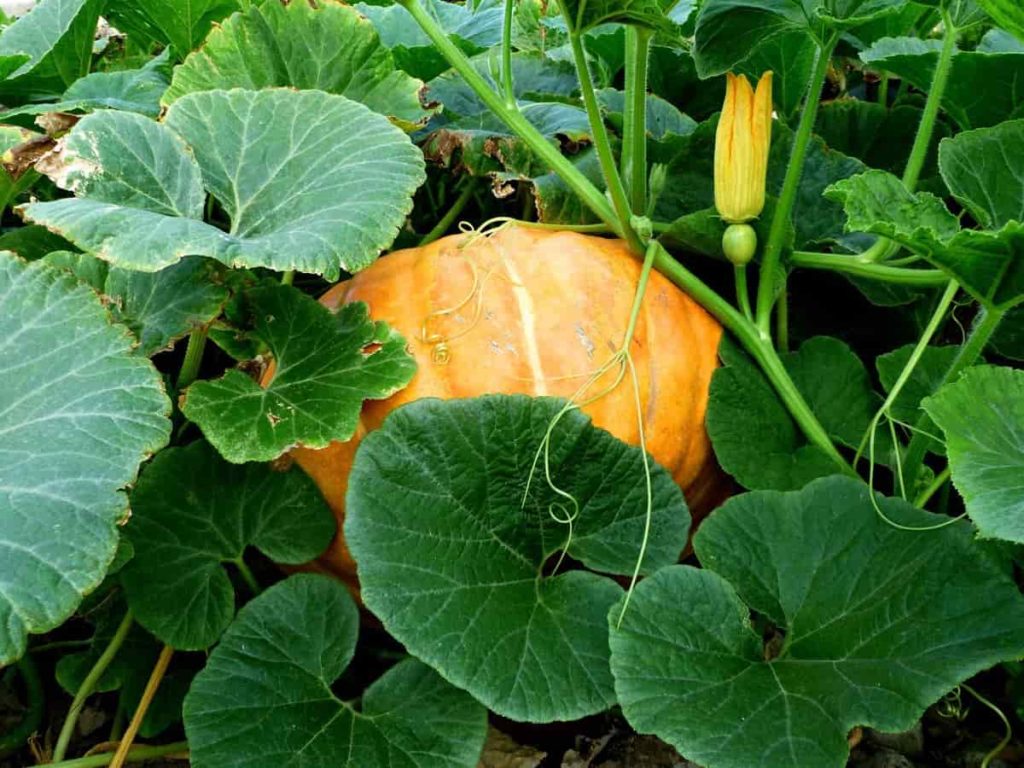
Why are my Pumpkins so small?
- Pumpkins rely heavily on large quantities of water to stay healthy, making it difficult to grow them in containers that can hold only limited water. Mulch the soil around the base of your plant after rain or water, using well-decomposed manure or compost.
- Since these are 90% water, Pumpkins need water every day. When their water source decreases, their growth stops resulting in smaller Pumpkins than expected. To avoid this, make sure your Pumpkin vines get water every day.
Do Pumpkins like sun or shade?
- They prefer a position in full sunlight that is sheltered from the wind. Choose a place that receives direct sun for at least 6 hours daily and prepares the soil in advance, adding plenty of well-decomposed manure or compost.
- Pumpkin plants need at least eight hours of direct sunlight each day, so choose a sunny place in your garden. As you probably know, at the moment, Pumpkins need full sun to grow. Avoid placing them in any shaded area. These achieve their maximum growth potential under the full sun.
Conclusion
Pumpkin is a delicious and versatile vegetable. Although Pumpkins will happily trail across your garden, they can be trained to grow up a trellis, and smaller varieties can also be planted in a pot or container. It’s not a quick process to grow a Pumpkin, but it’s relatively simple; novice gardeners or those missing the green thumb can also achieve success.
- How to Grow Hibiscus from Flower
- Plantation Ideas for Home Decoration: A Beginners Guide
- Flower Garden Designs and Layouts for Beginners
- Planting and Spacing Techniques in Papaya: A Beginner’s Guide
- Growing Gold: Essential Techniques for Planting Pineapples
- How to Make Kalanchoe Plant Bushy: Home Remedies and Solutions
- 11 Reasons Why Your Gardenia is Not Blooming: Home Remedies and Solutions
- Eco Elegance: The Guide to Designing a Drought-Tolerant Landscape
- Gardening on a Slope: Strategies for Hillside Landscaping
- Nourish and Flourish: Top Organic Mulches for Thriving House Plants
- Everything You Want to Know about Indian Mogra Flower: Discover Uses and Growing
- Green Thumb Success: Expert Tips for Cultivating Greenhouse Pumpkins All Year Round
- Maximize Growth & Flavor: The Ultimate Guide to Companion Planting in Herb Gardens
- How to Control Rhododendron Problems Naturally: Home Remedies and Organic Ways to Fix Them
- Natural Magic: The Remarkable Benefits of Cinnamon for Plants
- Best Steps to Revive Dying Tulip with Natural and Organic Treatment
- 10 Reasons Why Your Angel Trumpet is Not Blooming: Remedies and Treatment
- How to Fix Periwinkle Leaf and Flower-Related Problems: Natural Remedies and Solutions
- How to Fix Zinnias Leaf and Flower Problems: Discover Natural and Home Remedies
- Organic Steps to Induce Lemon Tree Flowers: A Comprehensive Guide
- Bloom Booster: Crafting the Perfect Homemade Bougainvillea Fertilizer
- Optimizing Growth: A Guide to Applying NPK Fertilizer for Potted Plants
- 10 Best Homemade Fertilizers for Rubber Plant: DIY Recipes and Application Method
- How to Boost Female Pumpkin Flowers: Effective Steps for More Flowers and High Yields
- Transform Your Indoor Garden: Top Benefits of Pink Salt for Houseplants
- 10 Best Homemade Fertilizers for Peacock Plants (Calathea): Easy DIY Guide
- Unlock Blooms: 9 Reasons Why Your Potted Chrysanthemum is Not Blooming
- 8 Reasons Why Your Potted Hibiscus is Not Blooming: Fix it with Simple Solutions
- Unlock Blooms: 9 Key Reasons Your Potted Frangipani Won’t Flower
- 10 Reasons Why Is My Ice Plant Not Blooming: Remedies and Treatment
- 10 Reasons Why My Potted Hydrangea Not Blooming: Treatment and Remedies
- 10 Reasons Why is My Wisteria Not Blooming: Remedies and Treatment
- 10 Reasons Why is My Goldfish Plant Not Blooming: Remedies and Treatment
- Maximize Your Space: Ultimate Guide to Balcony Gardening with Grow Bags
- 10 Reasons Why Your Iris is Not Blooming: Remedies and Treatment
- 10 Reasons Why Your Anthurium Plant is Not Blooming: Treatment and Remedies